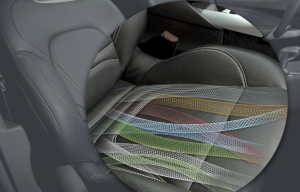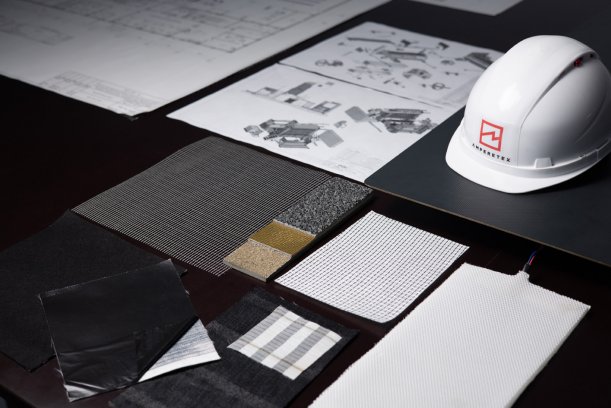
New route to multifunctional textiles with graphene nanotubes
Available as concentrates that can be added into melted polypropylene or polyamide.

10th February 2022
Innovation in Textiles
|
Kaliningrad, Russia
Amperetex, based in Kaliningrad, Russia, has developed an ultrafine polymer fibre with OCSiAl’s Tuball graphene nanotubes – also known as single wall carbon nanotubes – for the production of flexible textile heating elements.
“A current equivalent to an ordinary incandescent lamp with a power of 75 watts is enough to heat polymer material with a mesh made from such a fibre,” said Pavel Pogrebnyakov, founder and CEO of Amperetex. “The solution is safe for people – the voltage of clothing made from the fabric is only five volts.”
“Graphene nanotubes are one of the highest performing conductors on Earth,” added Dr Christian Maus, development and support leader for thermoplastics at OCSiAl Group. “At the same time, unlike other carbon additives, they are very flexible. Their shape is similar to a human hair, but 50,000 times thinner. Due to their unique properties, the dosage of graphene nanotubes required to modify polymer fibres can be so low that it doesn’t affect filament production or characteristics.”
The graphene nanotubes are available as concentrates that can be added into, for example, melted polypropylene or polyamide.

Heating mesh made of the fibres can be integrated into flexible materials or complexly-shaped composite elements. Laboratory tests have shown a fibre durability of 30,000 cycles, which is comparable to a 30-year service life. Electrically conductive heating meshes have successfully passed testing in various projects including an anti-icing roof, a bus stop, an anti-slip coating with integrated Amperetex heating elements, and embedded automatic heating sensors.
“The market for the application of such fibres is huge,” said Pogrebnyakov. “This includes the medical, agricultural, construction, oil and gas, automotive, and aerospace industries. We have already started the production of synthetic heating fabrics at industrial-scale volumes and this year, we plan to release a line of products for heating in previously unavailable areas. We are trying to reduce energy consumption and create solutions for the B2B sector in response to specific requests. The next step is the use of these elements for the heating of hard-to-reach objects and products with complex geometric configurations.”
Headquartered in Luxembourg, OCSiAl is the world’s largest manufacturer of graphene nanotubes with a current annual production capacity of 90 tons, which accounts for 97% of the world’s graphene nanotube production capacity. OCSiAl has developed more than 40 graphene nanotube products aimed at enhancing polymer materials, including thermosets, thermoplastics, elastomers and electrochemical power sources.

Business intelligence for the fibre, textiles and apparel industries: technologies, innovations, markets, investments, trade policy, sourcing, strategy...
Find out more